Whether you’re a full-time RVer or just enjoy the occasional camping weekend, it’s essential to understand your equipment. It’s equally as important to know when there’s a problem with your RV and how to diagnose it. One of the most common things that RVers wonder is how to tell if an RV converter is bad.
Bottomline Up Front: There are definite warning signs that indicate your RV converter is going bad. If your cooling fan, internal vents, or lights aren’t working correctly, there’s a good chance that your RV converter is going bad. You should also be on the lookout for strange flickering or dimming lights in and around your RV. Finally, if your RV battery doesn’t hold a charge the way it should, you likely have a bad converter.
In this article, we will look at everything you need to know about an RV converter. Most importantly, we’ll explain how to spot a faulty converter and where you can purchase a new one. Let’s get started!
What is an RV Converter?
An RV converter or power converter is an absolute must-have if you own an RV. When you plug your camper in at a campground, you are plugging into 30 or 50 amps of AC power. However, because RVs only use DC power, you need a converter to ‘convert’ the AC power to DC power. Otherwise, your RV is bound to run into big-time electrical issues.
Simply put, your RV converter takes 120 volts of AC current and turns it into 12 volts of DC power. Many people don’t realize that RVs can’t use AC power and assume that when they plug their camper into the campgrounds’ source of electricity, that’s all there is to it. However, you’ll quickly find that vital components of your RV don’t work without a working power converter.
What All Does Your RV Converter Power?
It should be noted that not all the appliances and electronics in your RV need DC power to operate. Your air conditioner, most of your power outlets, and washer or dryer don’t use DC power. Here are the main pieces of equipment that your converter helps to power.
- The interior and exterior lights on your RV
- The power slideouts on your RV
- The power jacks and power hitch on newer campers that don’t have manual options
- Vent fans and thermostats
- Your refrigerator if the main power happens to go out
- The converter keeps your RV battery charged in case of a power outage or when you’re not connected to an electrical supply
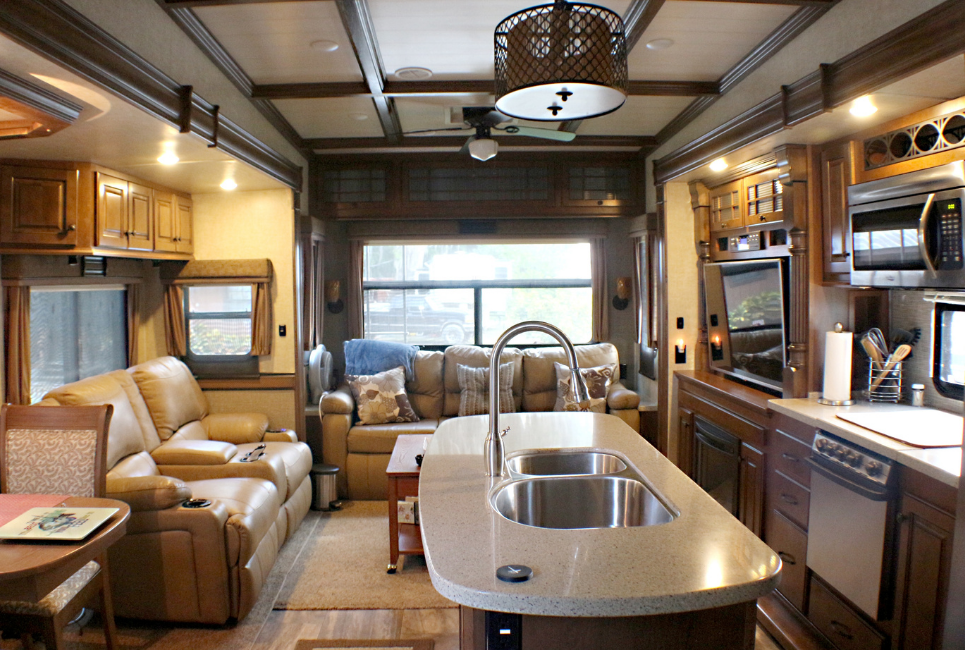
Depending on the year and style of your RV or travel trailer, not all of these items are powered by your converter and battery. However, some RVs are designed so that even more of your electronics and appliances are battery-operated. Make sure to check your owner’s manual to know what all your RV converter is needed for.
How Do I Find My RV Converter?
Converters aren’t large or intrusive appliances, and they aren’t always in obvious locations. They aren’t always in the same spot on every RV, so it’s important to know what signals to look for. Here are a few tricks that will help you locate the converter on any RV.
The first thing that you should look for is a fan vent or fan that seems otherwise out of place. Converters produce heat when operating, which means they need a fan to cool them off. Look and listen for vents and fans that aren’t in place to heat or cool your RV.
The second clue that you should look for is your control panel. RVs are small, and space is sacred, so RV designers try to put as many internal mechanical components in the same place. This makes maintenance more accessible and increases storage and living space. If you can locate your control panel, there’s a good chance that the converter is somewhere nearby.
Another trick you can use to find your converter is to trace the wires coming off your battery back to the converter. Because the converter is responsible for keeping the battery charged, wires will always connect the two.
The final DIY method of finding your RV converter is to turn all of your lights and electronics off. This includes the AC and anything else that might make noise if it’s running. With everything turned off, listen closely for a buzzing sound, which is the calling card of a running converter. If you can follow your ears to the source of the buzz, it will likely be your converter.
If all else fails and you can’t locate your converter, you should read your owner’s manual or contact the manufacturer of your RV. Only they will know with 100% certainty about the location of your converter.
How Do You Know if Your RV Converter is Bad?
As we briefly discussed above, several signals indicate a faulty RV converter.
Flickering or Dimming Lights
The first and most obvious sign that something is wrong with your RV converter is that the lights will mysteriously flicker and dim. No, your travel trailer isn’t haunted.
It just has a faulty power converter. In some cases, the lights won’t turn on, which means that the converter has drained the battery completely.
Batteries That Won’t Charge
Nearly all RVs and travel trailers are equipped with at least one battery. This battery is similar to a car battery, and it’s used to power parts of your RV while you’re not connected to electricity.
While your camper is plugged in, the converter constantly powers and charges your battery. If you suddenly find that your battery doesn’t hold a charge and drains for no reason, there’s a good chance that your converter is giving out.
Warning Lights
If you own a motorhome and notice warning lights lighting up your dashboard, one of them could mean a faulty converter. The converter is used to keep your battery charged while you’re driving your motorhome, and you’ll run into mechanical trouble if it starts to act up.
These are the main warning signs to watch out for with a power converter in your RV. However, the only way to know if the converter is causing these things is to test it.
How to Test an RV Converter

If you have some of the issues listed above, or if you just want to check things, here’s what you need to do:
Test Your DC Batteries
- Disconnect from all power sources and turn off the inverter, engine, generator.
- Connect a DMM (Digital Multimeter) to each battery and test them.
If the battery maintains a consistent charge between 12.3 and 12.9 volts, you’re good. Anything less is a bad sign.
Test AC power at the voltage box
Use your DMM to ensure it delivers power properly, and that’s not the issue.
Finally, you can use a DMM to test your converter at the DC distribution panel.
- Take one of the batteries you tested and connect it to your DMM and the DC distribution panel.
- Connect the DMM to the panel.
- You’ll see if the converter appropriately changes the power from AC to DC.
If the meter reads between 12.3 to 12.9 volts, it means the converter is working correctly. Anything less or more, and you may need to do some troubleshooting.
How Much Does It Cost to Replace an RV Converter?
The cost of repairing or replacing your RV converter depends on the type of converter you have and how difficult it is to work on. A simple repair will cost you anywhere between $100 and $200 on average because most RV technicians charge in the vicinity of $75 to $100 per hour.
Completely replacing an RV converter is much more costly, however. To replace a converter, you can expect to cough up anywhere between $200 and $1,500. The bigger the converter is and the more complicated it is, the more it will cost. Larger RVs and motorhomes will be on the higher end when replacing a converter, whereas small travel trailers will be on the low end.
What Causes an RV Converter to Go Bad?
Converters are hardy and durable appliances, and problems don’t typically occur for no reason. Your converter may be working fine, but there’s a root problem that’s inhibiting its ability to do its job.
Here are some of the top things to watch for if your converter isn’t working but seems to be intact.
Problems With the Cooling Fan
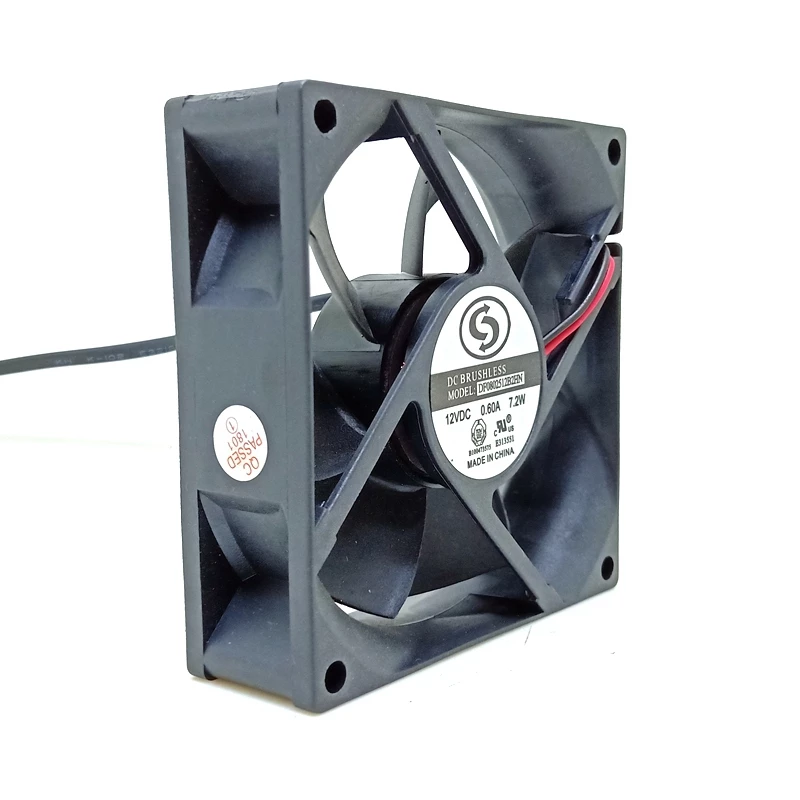
All RV power converters are hooked up to a cooling fan that keeps their temperature under control while they’re operating. Because they produce a decent amount of heat and are constantly working, converters will overheat if the fan isn’t working.
The fan itself doesn’t run constantly and is instead connected to the converter with 110 AC power. It kicks on and off periodically when the converter reaches a pre-determined temperature.
If there’s a problem with the 110-volt connection, the fan will not activate when the maximum converter temperature is reached. This will cause the converter to overheat and fail.
What to Do About a Faulty Cooling Fan
If you test the electrical connections between the converter, the fan, and the 110-volt connection and everything’s up to par, the fan may have given out. Converter cooling fans aren’t meant to last forever, and they’re prone to wear and tear or electrical malfunctions.
You should also check the thermal sensor in the fan that tells it when to activate once the converter reaches temperatures that are too high for it to operate safely.
If the cooling fan isn’t working or if there’s a problem with the thermal sensor, you’ll have to repair or replace them to get your converter working again. Unless you have previous electrical, maintenance, or RV technician experience, you will do well to contact an RV professional.
The Resistors and Diodes
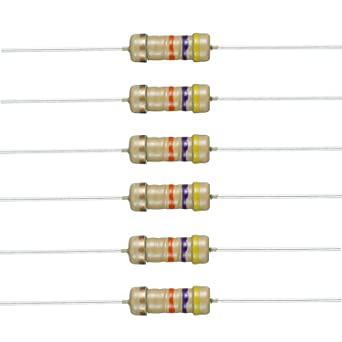
If you have an older RV or travel trailer, they may use old-fashioned restrictors and diodes for their electrical connections. Resistors are in place to manage AC power conversion to DC power and make it so that the electrical system doesn’t get overloaded.
If there’s a faulty resistor, it will cause your power converter to malfunction and cease operation. Resistors do this by completely cutting off the power flow to the converter.
On the other hand, Diodes don’t restrict the flow of electricity. Their job is to make sure that electricity doesn’t end up flowing the wrong way. Diodes essentially act as traffic cops that make certain electricity keeps going the right way.
The fact that there is constant electricity flowing through diodes makes them difficult to test. You have to know which way electricity flows and how much electricity should be present.
If you suspect a faulty diode keeps your converter from doing its job, you would be wise to contact an RV tech or electrician. They will have the tools and experience necessary to diagnose the problem.
A Malfunctioning Circuit Board or Breaker
It’s possible that your malfunctioning converter was caused by a problem at the main circuit board in your RV. Inside the circuit board or control panel, you should see a series of fuses and breakers, similar to ones that are inside a home. A power surge can cause breakers to flip, trip, or fail completely. It’s also possible that the electrical wires connected to the breakers have corroded.
To get to the bottom of the problem, you’ll need to test each breaker individually. If all the breakers seem to be working as they should, your next step is to remove the circuit board cover and inspect the wiring underneath. If you notice corrosion or white matter on any of the wires where they connect to the individual breakers, it’s likely the source of your converters’ problem.
Before working on any electrical wiring, ensure that your RVs power is turned off completely. 30 or 50 amps of power are enough to hurt or kill you if you happen to touch the wrong thing. To get rid of corrosion, mix 12 ounces of water with one teaspoon of baking soda. Wipe the corrosion away and give the wire time to dry before reconnecting it.
If you check the wiring, the breakers, and the connection between the two and your converter still isn’t working, it’s time to call in the professionals.
A Problem With the Fuse or Power Source
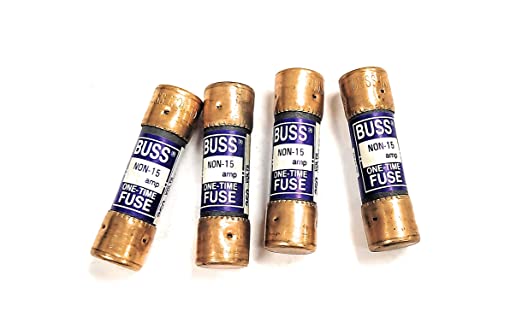
If your converter is powered by a fuse rather than a breaker or circuit board, it could be the source of the problem. Fuses are designed to handle a specific amount of electricity without much room for error. If there’s a sudden surge in power for any reason, fuses are designed to blow and cut power to whatever they’re connected to.
Fuses are tiny little devices, and they will be located inside your panel box or control panel. On the underside of the fuse, you should be able to see a tiny metal rod stretching in a straight line from the top of the fuse to the bottom. If the metal rod is severed or crooked, the fuse has blown, and you’ll need to replace it.
Frequently Asked Questions
Question: Where can I find a replacement power converter for my RV?
Answer: You can find replacement converters at stores on Amazon or at RV stores. RV Center, Camping World, and RV One Superstores are just a few of the many options for RV replacement part stores.
Question: What’s the most important aspect of protecting my RV converter?
Answer: If you want your converter to enjoy a long and healthy life, regular maintenance checks are crucial. You must perform your own checks, but you should also service a professional maintenance check at least every other year, if not more often.
Final Thoughts
As you can see, RV converters are absolute necessities to enjoying your camping experience. If your converter isn’t working properly, you’ll experience annoying electrical issues and possibly be completely without power.
Knowing the signs and symptoms of a converter giving out is good knowledge no matter who you are. You can spot the problem before the converter ultimately gives out which could save money on repairs!


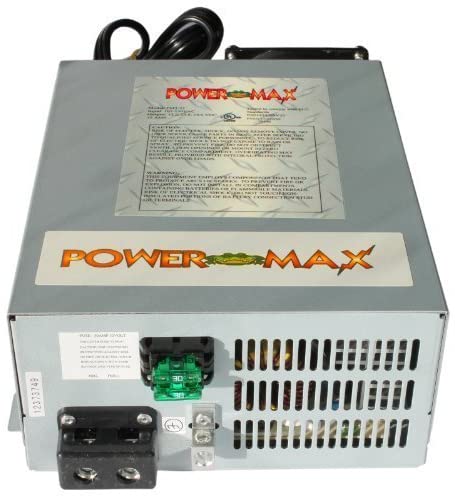
Could a bad connection of the extension cord from the surge protector to the camper be a cause of frying the power converter, we changed cords and now lights and fridge works but none of the receptacles work